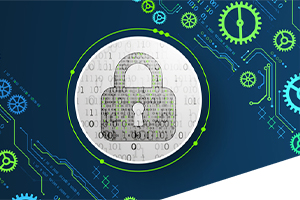Securing SMBs with Proactive Security Assessments
Security threats constantly evolve, presenting numerous challenges for small and medium-sized businesses (SMBs). Cybercriminals continuously devise...
3 min read
![]() Zones
:
Jul 14, 2023 8:00:00 AM
Zones
:
Jul 14, 2023 8:00:00 AM

Introduction:
Cyber threats continue to evolve and proliferate, and businesses must prioritize their cybersecurity strategies to protect their assets and maintain operational continuity.
Cyber resilience refers to an organization's ability to withstand, adapt to, and recover from cyber-attacks while minimizing the impact on business operations and customer trust. This blog will explore the importance of cyber resilience and how organizations can build a robust defense against the ever-changing cyber threat landscape.
Understanding the Cyber Threat Landscape
In an interconnected world, cyber threats lurk around every corner, posing significant risks to businesses of all sizes. From ransomware attacks and data breaches to phishing attempts and insider threats, the range and complexity of cyber-attacks are constantly increasing.
According to a recent study, Cybercrime will cost $8 trillion in 2023 and is forecasted to grow to $10.5 trillion by 2025. The average cost of a data breach is now estimated at $4.35 million.
Cybercriminals employ sophisticated techniques, leveraging social engineering, zero-day vulnerabilities, and advanced persistent threats (APTs) to bypass traditional security measures. These attacks disrupt operations and result in financial losses, reputational damage, and regulatory non-compliance. To combat these threats effectively, organizations must adopt a proactive approach and build a strong foundation of cyber resilience.
The Benefits of Cyber Resilience
Enhanced threat detection and response: Cyber resilience measures enable organizations to detect threats earlier and respond swiftly, reducing the time it takes to contain and mitigate potential damages.
Minimized downtime and disruptions: A resilient infrastructure allows businesses to recover faster, minimizing downtime and disruptions to critical operations. This translates into cost savings and maintains customer confidence.
Protection of reputation and customer trust: Organizations build trust with customers and stakeholders by demonstrating a commitment to cyber resilience, safeguarding their reputation in an increasingly security-conscious market.
Compliance and regulatory adherence: Cyber resilience strategies align with various industry-specific regulations and compliance standards, ensuring organizations meet legal requirements and avoid potential penalties.
Pillars of Cyber Resilience
The critical pillars of cyber resilience form the building blocks for a robust defense strategy against cyber threats. These pillars encompass both preventive and responsive measures to ensure organizations can withstand and recover from attacks swiftly and effectively.
Cybersecurity awareness and training: Employees are often the weakest link in an organization's cybersecurity posture. By cultivating a culture of cybersecurity awareness and providing regular training, organizations can empower their workforce to recognize and respond to potential threats proactively.
Robust Incident response plan: Having a well-defined incident response plan is crucial for minimizing the impact of cyber-attacks. This plan should outline the roles and responsibilities of the incident response team, establish clear communication channels, and include predefined steps for containment, eradication, and recovery.
Regular risk assessments and vulnerability management: Regular risk assessments and vulnerability scans help identify potential weaknesses in the network, applications, and infrastructure. Organizations can significantly reduce the attack surface and fortify their defenses by addressing these vulnerabilities promptly.
Resilient Infrastructure and data protection: Implementing robust security controls, such as firewalls, intrusion detection systems (IDS), and encryption mechanisms, ensure the protection of critical infrastructure and sensitive data. Regular backups and secure offsite storage also play a vital role in data recovery and business continuity efforts.
Building a Cyber-Resilient Culture
Building a cyber-resilient culture within organizations is very crucial. It is not enough to rely solely on technology and processes; employees must actively pursue cyber resilience.
Leadership and Governance: Organizations must demonstrate strong leadership and commitment to cybersecurity, establishing a governance framework that promotes cyber resilience as a strategic priority. This includes clear roles and responsibilities, executive buy-in, and adequate resource allocation.
Continuous education and awareness: Cybersecurity education should be an ongoing process, with regular training sessions, awareness campaigns, and simulated phishing exercises. By empowering employees with knowledge and skills, organizations can transform them into the first line of defense against cyber threats.
Collaborative Approach to Cyber Resilience
Cyber threats are not limited to a single organization; they often require a collective effort to combat them effectively.
Information sharing: Engaging in threat intelligence sharing initiatives, such as industry-specific Information Sharing and Analysis Centers (ISACs), allows organizations to stay ahead of emerging threats and leverage shared knowledge for better defense strategies.
Strategic partnerships: Organizations can establish strategic partnerships with trusted technology vendors, managed security service providers (MSSPs), and incident response teams to augment their cyber resilience capabilities. These partnerships bring expertise, specialized tools, and 24/7 support.
Testing and Continuous Improvement
The importance of regular testing, assessment, and continuous improvement ensures that cyber resilience remains effective in the face of evolving threats.
Penetration testing and red teaming: Regularly conducting penetration testing and red teaming exercises helps identify vulnerabilities and weaknesses in the organization's security posture. These assessments simulate real-world attacks and provide valuable insights for improving defenses.
Lessons Learned and post Incident reviews: Following a cyber incident, conducting thorough post-incident reviews and documenting lessons learned allow organizations to refine their cyber resilience strategies. This continuous learning process helps drive improvements and prepares organizations for future incidents.
Conclusion:
Cyber resilience is paramount in today's dynamic threat landscape. Organizations must adopt a comprehensive approach encompassing technology, processes, people, and partnerships to build a strong defense against cyber-attacks. By understanding the threat landscape, implementing the pillars of cyber resilience, fostering a cyber-resilient culture, promoting collaboration, and continuously testing and improving, organizations can effectively increase their ability to withstand and recover from cyber threats.
References:

Security threats constantly evolve, presenting numerous challenges for small and medium-sized businesses (SMBs). Cybercriminals continuously devise...

3 min read
Introduction: Organizations are facing unprecedented security complexity, and as technology advances and cyber threats become increasingly...

1 min read
Business has evolved a great deal in just the last couple of years. Employees are getting more digital and more flexible; companies are getting more...